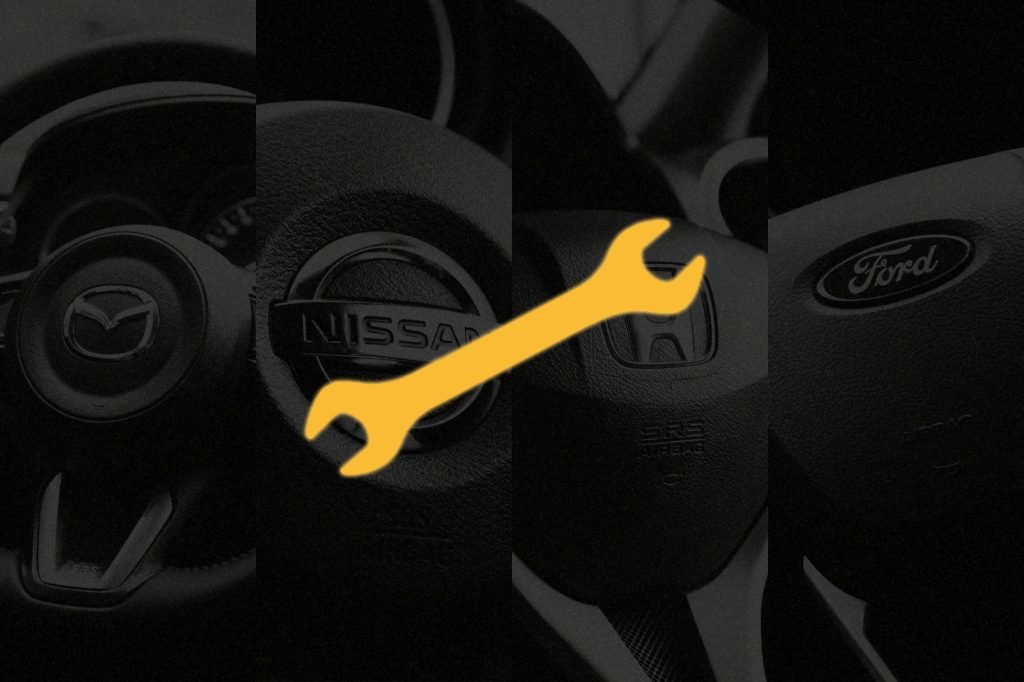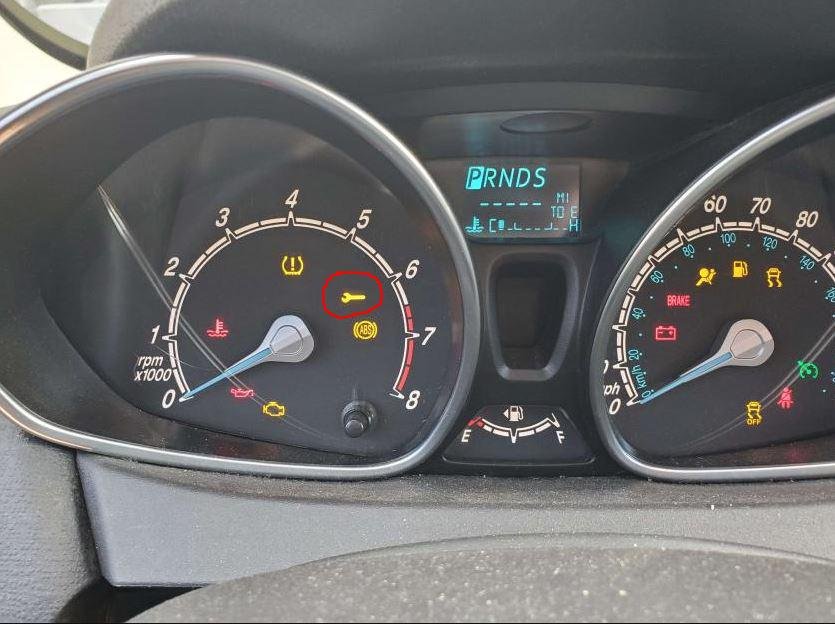The wrench light on your dashboard indicates a maintenance issue or service requirement. It signals that your vehicle needs attention.
The wrench light serves as a crucial alert for car owners. It typically appears when there’s a maintenance issue or scheduled service requirement. Addressing the wrench light promptly can prevent potential problems. Ignoring this warning could lead to costly repairs or reduced vehicle performance.
Regular maintenance keeps your car running smoothly and efficiently. Always consult your vehicle’s manual or a professional mechanic when the wrench light illuminates. Maintaining your vehicle ensures safety and longevity. Keeping up with scheduled services helps avoid unexpected breakdowns.
Regular checks and timely service keep your car in optimal condition, ensuring a safe driving experience.

Credit: www.carparts.com
Wrench Light Basics
The wrench light on your car’s dashboard can be puzzling. Understanding it helps maintain your vehicle’s health. This guide breaks down the basics, misconceptions, and significance of the wrench light.
Introduction To Wrench Light
The wrench light indicates your car needs maintenance. It could be a minor or major issue. Ignoring it can lead to bigger problems. It acts as an early warning system.
Manufacturers use it to alert drivers. It suggests a visit to the service center. The light is typically yellow or orange. It resembles a small wrench symbol.
Common Misconceptions
There are many misconceptions about the wrench light. Some think it means immediate danger. This is not always true. Often, it’s a reminder for scheduled maintenance.
Others believe it only indicates oil changes. The wrench light can mean more. It could be a transmission issue, brake problem, or other maintenance needs.
Ignoring the wrench light can be a costly mistake. Always check your owner’s manual. It provides specific instructions for your vehicle.
| Misconception | Reality |
|---|---|
| Immediate danger | Often a routine check |
| Oil change only | Could be various issues |
| Ignore it | Check the manual |

Credit: www.whipflip.com
When The Wrench Light Comes On
Seeing the wrench light on your car’s dashboard can be alarming. This warning light signals an issue that needs attention. Understanding its meaning helps you maintain your car effectively.
Initial Reactions
Your first reaction might be panic or worry. Stay calm and focused. The wrench light indicates a maintenance issue, not always an emergency.
Check your dashboard for additional lights or messages. These can provide more information about the problem.
Immediate Steps To Take
Follow these steps to address the wrench light:
- Safely pull over to a secure location.
- Turn off your engine and let it rest for a few minutes.
- Consult your car’s manual for specific information.
- Check fluid levels, such as oil and coolant.
- Restart the car to see if the light remains.
- Contact a professional mechanic if the light stays on.
Taking these steps helps ensure your car remains in good condition. Addressing the wrench light promptly can prevent further issues.
Common Causes
The wrench light can be alarming. It usually means something needs your attention. Understanding the causes helps you address issues promptly.
Routine Maintenance
One common cause is routine maintenance. Your car may need an oil change. It might also need a tire rotation. These are normal tasks.
Check your vehicle’s manual for scheduled services. The wrench light can remind you of these tasks. Keeping up with maintenance extends your car’s life.
System Malfunctions
System malfunctions also cause the wrench light. This could mean a problem with the transmission. It might also indicate an issue with the engine.
Sometimes, it’s an electrical problem. A sensor may be failing. This impacts your car’s performance. Addressing malfunctions quickly prevents bigger issues.
| Cause | Description |
|---|---|
| Routine Maintenance | Oil changes, tire rotations, scheduled services |
| System Malfunctions | Transmission issues, engine problems, electrical faults |
Diagnosing The Problem
Seeing the wrench light on your dashboard can be alarming. It signals a potential issue with your vehicle. Diagnosing the problem helps determine the cause. This section will guide you through the process.
Using Diagnostic Tools
Modern vehicles have built-in diagnostic systems. These tools help identify specific issues. A common tool used is the OBD-II scanner. This device connects to your car’s computer system. Once connected, it reads the error codes.
Follow these steps to use an OBD-II scanner:
- Locate the OBD-II port, usually under the dashboard.
- Plug the scanner into the port.
- Turn on your vehicle.
- Read the error codes displayed on the scanner.
Each code corresponds to a specific issue. Refer to the scanner’s manual for code meanings.
Consulting The Manual
Your vehicle’s owner’s manual is an essential resource. It provides detailed information about the wrench light. The manual explains the different warning lights and their meanings.
To consult the manual:
- Find the section on dashboard warning lights.
- Look for the wrench light symbol.
- Read the description and possible causes.
Some manuals include troubleshooting tips. These tips can help you identify the issue faster. Always keep your manual handy for quick reference.
Solutions And Fixes
The wrench light on your dashboard can be confusing. It often signals a maintenance issue. Knowing the right solutions can save you time and money. Below, we discuss DIY fixes and when to seek professional help.
Diy Fixes
Some wrench light issues are simple to fix. You can handle these at home. Here are a few common solutions:
- Check Fluids: Ensure your engine oil and coolant are at the right levels.
- Battery Health: Inspect the battery terminals for corrosion.
- Air Filter: A dirty air filter can trigger the wrench light. Replace it if needed.
- Tire Pressure: Use a gauge to check and adjust tire pressure.
Always consult your car’s manual for specific instructions. This ensures you follow the right steps.
Professional Help
Sometimes, DIY fixes aren’t enough. Complex issues need a professional touch. Here’s when to seek help:
- Engine Problems: If the wrench light stays on, visit a mechanic.
- Transmission Issues: Unusual noises or shifting problems need expert care.
- Electrical Faults: Flickering lights or dashboard errors require professional diagnostics.
Professional mechanics have the tools and knowledge to diagnose your car. They can ensure your vehicle runs smoothly.
Preventative Measures
Understanding the wrench light on your car’s dashboard is crucial. It indicates a need for preventative measures. These measures help avoid costly repairs and ensure a smooth ride. Let’s dive into some essential tips.
Regular Maintenance Tips
Regular maintenance keeps your car in top shape. Follow these simple steps:
- Check your oil levels every month. Low oil can damage the engine.
- Inspect your tire pressure weekly. Proper pressure ensures safety and fuel efficiency.
- Replace the air filter every 12,000 miles. A clean filter improves engine performance.
- Change the spark plugs every 30,000 miles. This keeps your engine running smoothly.
- Check the battery terminals for corrosion. Clean them if needed.
These simple tasks can prevent the wrench light from appearing. It’s a small effort for big rewards.
Monitoring Car Performance
Keep an eye on your car’s performance. It helps catch issues early. Here are a few tips:
- Listen for unusual noises. Strange sounds can signal a problem.
- Watch for warning lights on your dashboard. Never ignore them.
- Notice any vibrations or shaking. These can indicate tire or engine issues.
- Check for fluid leaks under your car. This includes oil, coolant, and brake fluid.
- Pay attention to your brakes. Soft or noisy brakes need immediate attention.
Monitoring performance helps you stay ahead of potential problems. It ensures a safe and reliable vehicle.
Impact On Car Performance
The wrench light on your car’s dashboard signals maintenance issues. It can affect your vehicle’s performance in various ways. Understanding these effects can help you take timely action.
Short-term Effects
When the wrench light first comes on, you may notice minor changes. These changes can include:
- Reduced fuel efficiency
- Sluggish acceleration
- Rough idling
These issues might seem small but can escalate quickly. Paying attention early can prevent further damage.
Long-term Consequences
If the wrench light is ignored, the problems can become severe. Over time, the effects on your car’s performance can include:
| Problem | Long-term Effect |
|---|---|
| Engine wear | Costly repairs |
| Transmission issues | Reduced lifespan |
| Fuel system problems | Decreased efficiency |
Ignoring the wrench light can also lead to safety concerns. Your car might stall or fail to start. Addressing the wrench light promptly helps maintain your car’s health and safety.

Credit: www.mazdaofbedford.com
When To Seek Professional Help
Understanding the wrench light on your car’s dashboard is crucial. This light indicates a problem that needs attention. Knowing when to seek professional help can save time and money.
Signs You Can’t Ignore
Some signs indicate you need a professional mechanic. Pay attention if you notice:
- Unusual noises from the engine
- Frequent stalling or hard starting
- Decreased fuel efficiency
- Dashboard warning lights that stay on
These signs mean your car needs expert help. Ignoring them can lead to bigger problems.
Choosing The Right Mechanic
Finding the right mechanic ensures your car gets proper care. Consider these factors:
| Criteria | Why It Matters |
|---|---|
| Certifications | Ensure the mechanic is qualified |
| Reviews | Check online reviews for feedback |
| Experience | Experienced mechanics handle problems better |
| Warranty | Look for a warranty on repairs |
Choosing a certified and experienced mechanic is important. Always check reviews and ask about warranties.
Frequently Asked Questions
- What Does The Wrench Light Indicate?
The wrench light usually signals a maintenance issue or a problem with the vehicle’s powertrain.
- Is It Safe To Drive With A Wrench Light On?
It’s best to avoid driving until you diagnose the wrench light’s cause. It could indicate a serious issue.
- How To Reset The Wrench Light?
Resetting the wrench light often involves fixing the underlying issue, then using the vehicle’s onboard diagnostics system.
- Can Low Oil Cause The Wrench Light?
Yes, low oil levels can trigger the wrench light. Check your oil levels and top up if necessary.
- Does The Wrench Light Mean A Transmission Problem?
It can indicate a transmission issue. Consult your vehicle’s manual or a mechanic for an accurate diagnosis.
Conclusion
Understanding the wrench light on your dashboard is crucial for vehicle maintenance. It signals needed repairs or maintenance. Ignoring it can lead to larger issues.
Always consult your owner’s manual or a professional. Regular checks can keep your car running smoothly.
Stay informed and ensure your vehicle’s longevity.
Recent Posts
Maintaining clean gutters is essential for preventing water damage to your home, and choosing the best ladder for cleaning gutters can make the job much easier and safer. With so many options on the...
Best Ladder for Cleaning Caravan Roof: Top Picks for You Every Adventure!
Today we will discuss the best ladder for cleaning caravan roof. Cleaning caravan roofs is one of the crucial tasks.After many days, a caravan roof can get dirty by debris, dirt, and grime. These can...
